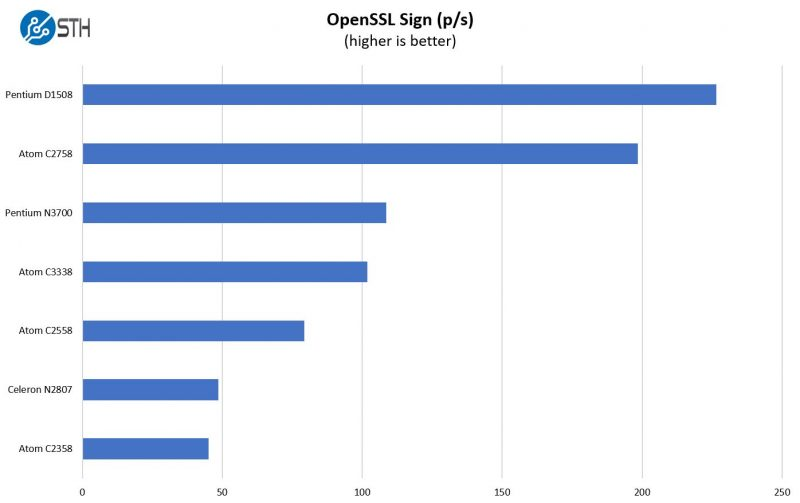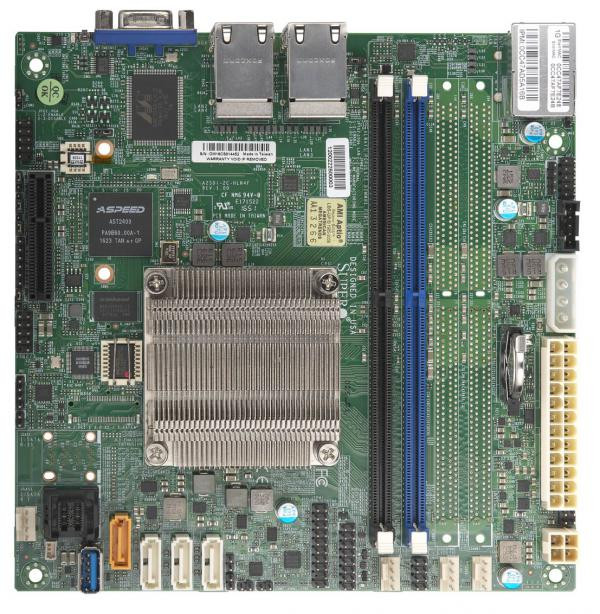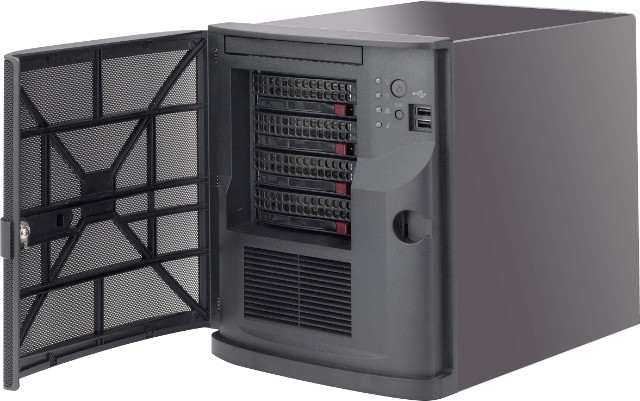Almost exactly one year ago, I wrote about Intel Atom C3000 Series “Denverton” processor based on the same Goldmont architecture used in Apollo Lake processor, and used in an early GIGABYTE MA10-ST0 server motherboard prototype. The latter is not out yet, but according to a YouTube video, the 16-core motherboard should be launched in H2 2017. In the meantime, Supermicro also made their own Denverton motherboard based on a lower-end Atom C3338 dual core processor.
Supermicro A2SDi-2C-HLN4F board specifications:
- Processor – Intel Atom C3338 dual core Denverton processor @ 1.50 / 2.20 GHz with 4 MB cache; 9W TDP
- System Memory
- Up to 64GB Register DIMM RDIMM and DDR4-1866MHz
- Up to 32GB Unbuffered ECC/non-ECC UDIMM, DDR4-1866MHz, in 2 DIMM slots
- Storage – 4x SATA 3 ports, but up to 8x SATA 3 (6 Gbps) ports are configurable; N.B.: total combined PCI-E lanes and SATA ports is up to 8
- Connectivity – 4x GbE Ethernet via Intel C3000 SoC
- USB – 4x USB 2.0 ports including 2x via headers, 1x USB 3.0 port
- Expansion – 1x PCI-E 3.0 up to x4 (in x4 slot); number of PCI-E lane is configurable via BIOS setup: 0, 2, or 4.
- Video Output – VGA
- Serial – 1x COM port via header
- IPMI & 2D Graphics – ASPEED AST2400 BMC
- Misc – TPM header; AMI UEFI 2.4/SMBIOS 2.7.1 “BIOS”; HW monitoring: 4-fan status and tachometer, CPU voltage monitoring, system temperature, VBAT, etc…
- Power Supply – ATX power connector; 12V DC power input; CPU thermal trip support for processor protection; power-on mode for AC power recovery
- Dimensions – 17.02cm x 17.02cm (Mini-ITX)
- Temperature Range – Operating: 0°C ~ 60°C; storage: -40°C – 85°C
The board supports Windows 64-bit operating systems like Windows 10, Windows Server 2016, Hyper-V Server 2016, etc.. as well as various 64-bit Linux distributions such as RedHat Linux EL 7.3, Fedora 25, SuSE SLES 11 SP4, Ubuntu 16.04 LTS and others, as well as FreeBSD. You may find the full list here.
If you’d like a complete system, the company also offer SuperServer 5029A-2TN4 with the board, and the company’s SC721TQ-250B mini tower with four hot-swap 3.5″ SATA drive bays, two internal 2.5″ drive bays, and 1 slim DVD-ROM drive bay shared with one internal 2.5″ bay.
Supermicro A2SDi-2C-HLN4F motherboard is sold for just above $200 on websites such as Atacom and WiredZone. I found the barebone “SuperServer” sold for $405 on Newegg. The latter has been reviewed on ServeTheHome in April with the conclusion rather positive:
If you are looking for a 1GbE NAS unit, this is a great option. The performance is well above the previous generation dual core and sometimes quad core models. The ability to maintain a low power profile will help ROI.
Over time, we expect to see better support for the X553 NIC. The major competition for this unit will be when the higher core count variants come out and iterations that support 10GbE.
In many environments, this is going to be a perfect NAS/ network services platform. If you wanted a simple 1GbE Linux NAS or caching appliance, the Supermicro SYS-5029A-2TN4 should be high on your list.
They also ran several benchmarks to put the CPU performance into perspective.

You’ll find more details about the motherboard on the product page.
Thanks to Paul for the tip.

Jean-Luc started CNX Software in 2010 as a part-time endeavor, before quitting his job as a software engineering manager, and starting to write daily news, and reviews full time later in 2011.
Support CNX Software! Donate via cryptocurrencies, become a Patron on Patreon, or purchase goods on Amazon or Aliexpress






